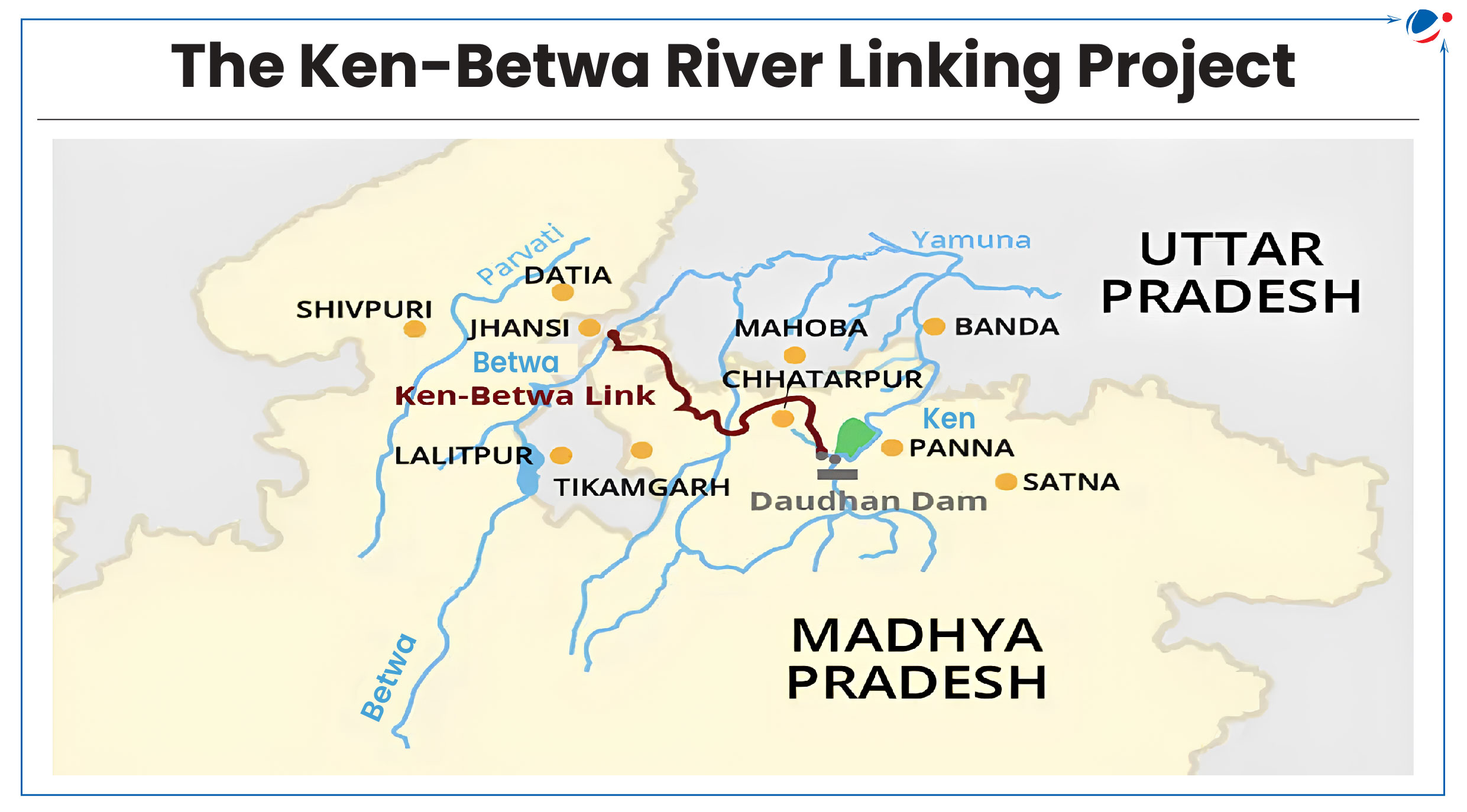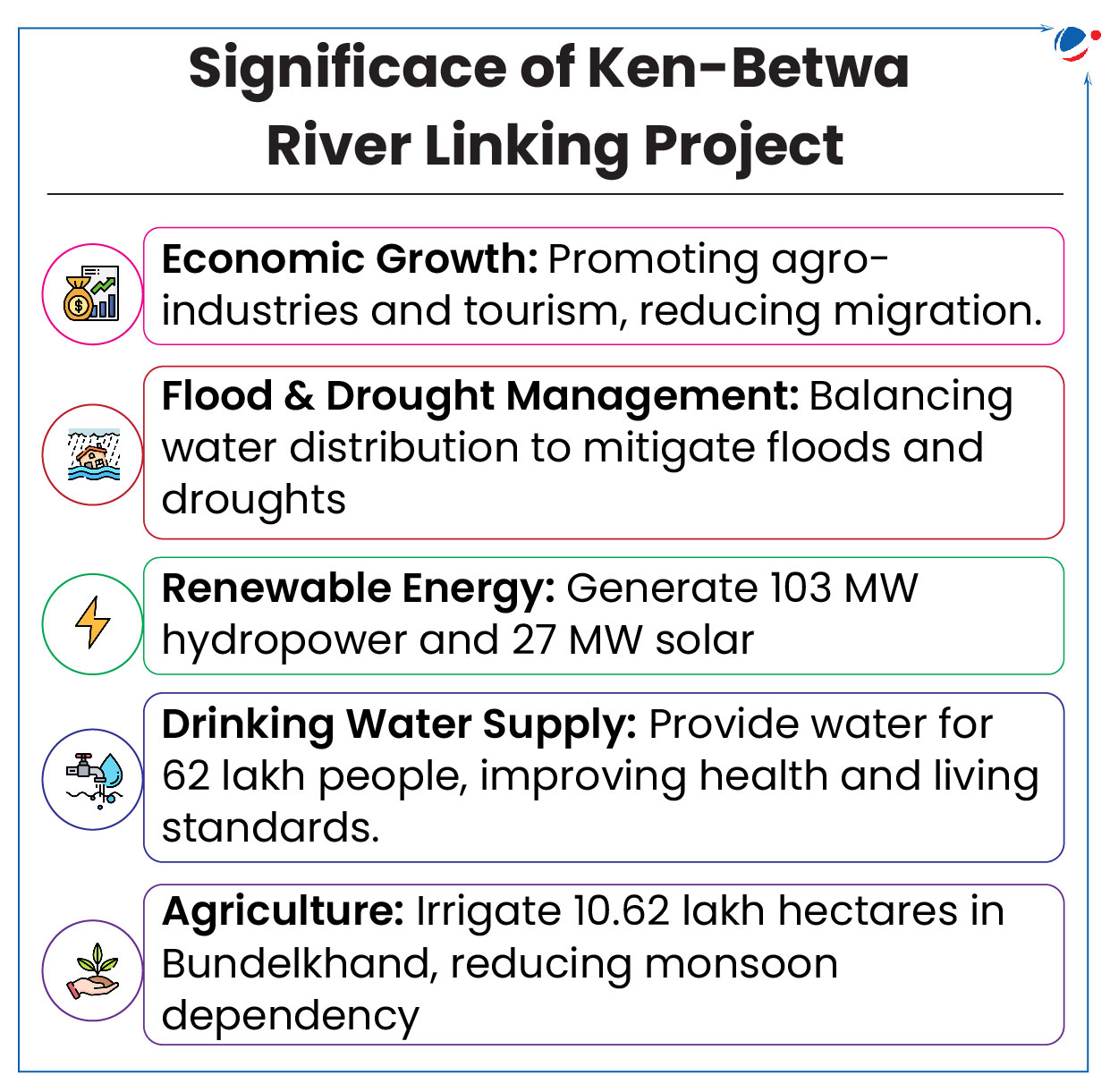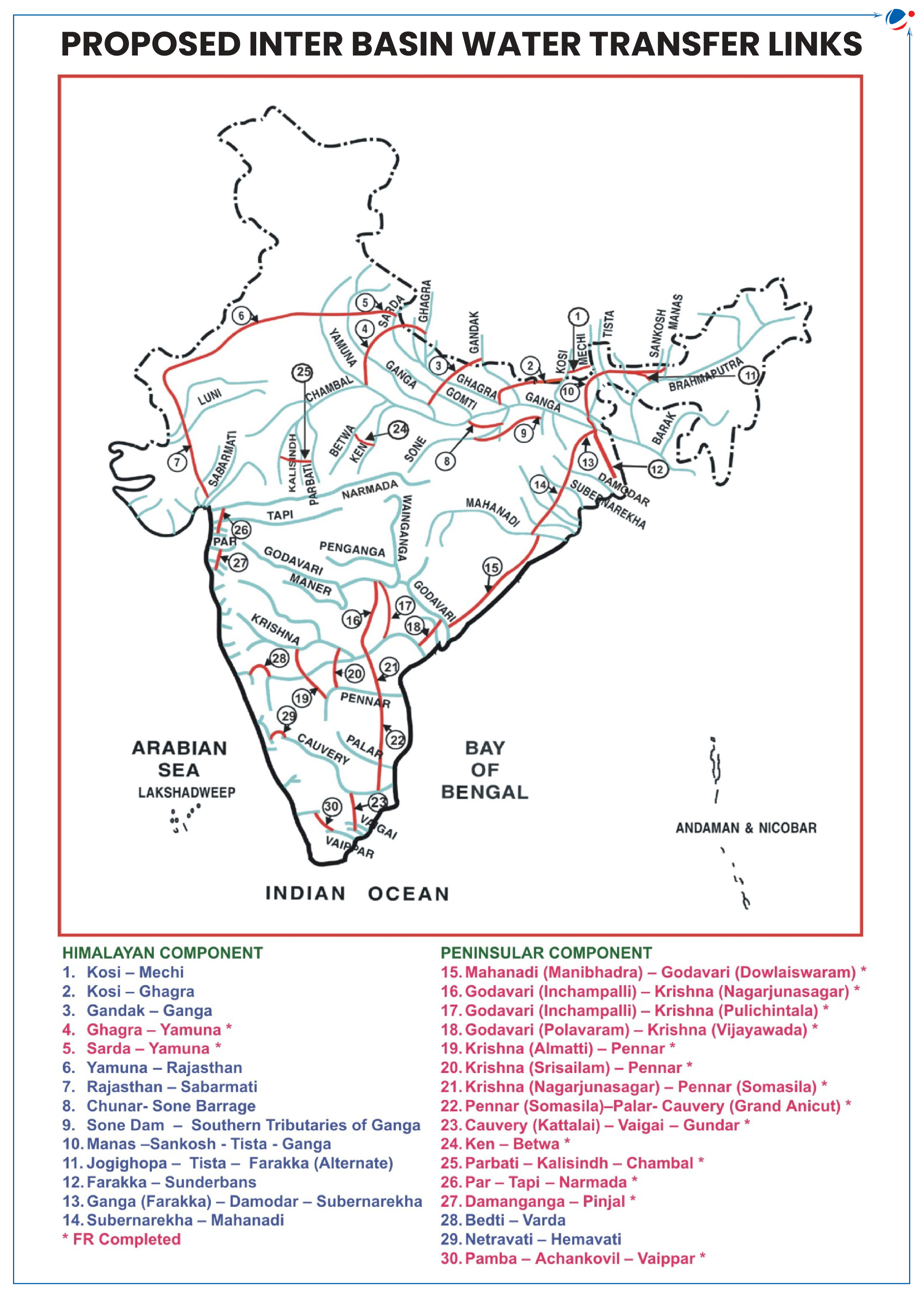Why in the News?
Prime Minister laid the foundation stone of the Ken- Betwa River Linking National Project.

About Ken-Betwa Link Project
- Overview: Part of India's National River Linking Project (NRLP), aimed to divert surplus water from the Ken basin to water-scarce areas in the Betwa basin. Completion is targeted by 2030.
- Location: Spans Madhya Pradesh and Uttar Pradesh, focusing on the drought-prone Bundelkhand region.

- Key Components:
- Phase I:
- Daudhan Dam (77 m high) in Panna Tiger Reserve for irrigation and power generation.
- Ken-Betwa Link Canal (221 km) to transfer water.
- Phase II:
- Lower Orr Dam, Bina Complex, and Kotha Barrage to address water scarcity in the Betwa basin.
- Phase I:
National River Linking Project (NRLP)
- Background:
- The idea of interlinking of rivers was first proposed by Sir Arthur Cotton in 1850s. It was then revived in 1972 by K.L. Rao, then India's minister of power and irrigation.
- Initiated in the 1980s under the National Perspective Plan (NPP) and in 1982 National Water Development Agency (NWDA) was set up to study the feasibility of the river linking.
- In 2021, the Centre proposed National Interlinking of Rivers Authority (NIRA) as the apex implementing body for NPP and to replace NWDA.
- Objectives:
- The program aims to transfer water from surplus to deficit regions, potentially irrigating 30 million hectares and generating 20,000-25,000 MW of power.
- It is seen as a way to mitigate floods and droughts, increase rural income, and aid navigation.
- National Water Development Agency (NWDA) has identified following components:
- Himalayan Rivers Development: 14 links, focusing on northern rivers like the Ganga and Brahmaputra.
- Peninsular Rivers Development: 16 links, including the Ken-Betwa link.
- Intra-State Links: For within-state water management.

Challenges of River Linking Projects
- Environmental Impact
- Major disruption to wildlife habitats, with projects like Ken-Betwa submerging 98 sq. km. of Panna Tiger Reserve, threatening tigers, gharials, and various species.
- Extensive deforestation causing local climate changes.
- Studies by IIT-Bombay indicate potential rainfall deficits due to water transfer.
- Economic Concerns
- High implementation costs (e.g., Ken-Betwa at ₹44,605 crore) raising questions about viability.
- Significant ongoing maintenance costs adding to financial burden.
- Social Implications
- Large-scale displacement of local populations.
- Complex rehabilitation and compensation challenges affecting communities.
- Disruption of traditional livelihoods and social structures.
- Technical Challenges
- Uncertainty in water availability, especially with non-perennial rivers.
- Water quality concerns during transfer between river systems.
- Question of sustainable alternatives like rainwater harvesting versus large-scale linking.
Way Forward to Address Regional Water Disparity
- Interstate Cooperation
- Create clear frameworks for water sharing between states.
- Establish effective dispute resolution mechanisms.
- Regular interstate consultations to prevent delays.
- Stakeholder Engagement
- Enable community participation in planning and implementation and establish transparent communication with local populations.
- Incorporate indigenous knowledge in water management.
- Technological Integration
- Deploy smart irrigation systems and real-time monitoring tools.
- Utilize advanced water management technologies.
- Integrate sustainable solutions like the Mangal Turbine.
- Mangal Turbine, invented by Bundelkhand farmer Mangal Singh in 1987, harnesses flowing water's kinetic energy to lift water for irrigation without using diesel or electricity.
- Environmental Protection
- Strengthen Environmental Impact Assessment (EIA) with comprehensive hydrological studies.
- Implement effective compensatory measures for ecological damage.
- Develop monitoring systems to track environmental changes.



